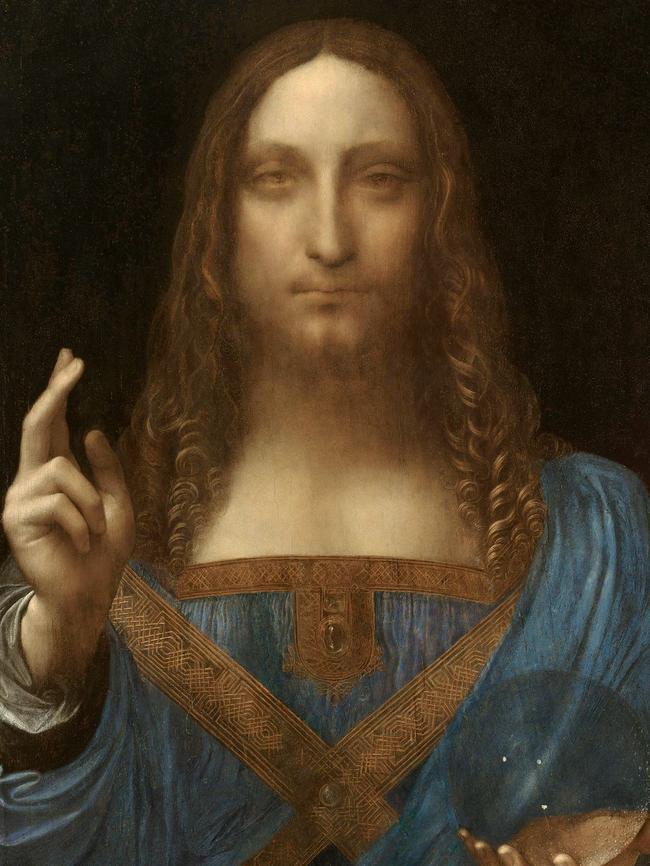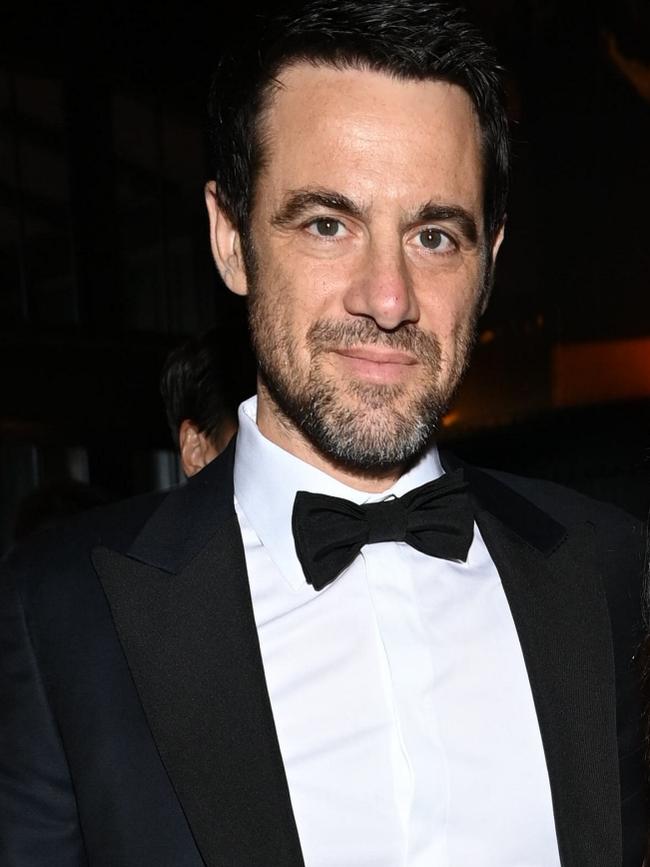Want to buy a late-period Picasso? Just swipe right on the Tinder for art
Loic Gouzer was behind the sale of the most expensive artwork in history. Now he’s selling masterpieces via his app.

As collectors and aficionados perused the offerings at Frieze New York in mid-May, they formed a who’s who of the art world. Notably absent, however, was one of America’s most successful private auctioneers. “I’m not in the nitty-gritty – I don’t go to the shows, I don’t know who is hot. I’m not in the conversation,” Loic Gouzer says. “There’s a lot of chat and I’m just not into it.”
Gouzer, the 44-year-old Swiss-born former head of contemporary art at Christie’s and the man responsible for the sale of the most expensive artwork in history – Leonardo da Vinci’s Salvator Mundi, which sold for $US450m ($700m) in 2017 – was too busy preparing the lot of a late-era Picasso for a select group of prospective buyers on his app.
Gouzer launched Fair Warning in 2020 as a members-only platform. Instead of choosing works based on what was “of the moment”, Gouzer – one of the most influential people in the art world, described variously as a “daredevil” and a “rainmaker” for Christie’s – picks what he would hang on his own walls at home.
“Just look at this,” he says of the 1971 Picasso etching Tete d’homme a la pipe. “The assurance, the freedom – this 90-year-old man at the peak of his final peak surpassed anything he ever did on canvas at this period.
“Everything that everyone sells is now called a masterpiece, it’s become hollow.
“We allow buyers to reach a conclusion themselves on whether something is a true masterpiece. The problem in the art world is that it surfs a wave that crashes.
“All the blah-blah and the hype will disappear in five years’ time. Our bet is that down the line, people realise we weren’t bullshitting them.”

Gouzer came away from his experience at Christie’s – and Sotheby’s before that – believing that auction houses should set the pace for the market like a conductor bringing out the composer’s score, rather than allowing the “impulses” of market forces to drive a work’s worth.
Accordingly, Gouzer sets his own, slower tempo. Fair Warning – a phrase used by auctioneers before they bang down the gavel – lists just a single piece of art every Thursday afternoon. Bidding starts on the app at 10pm British summer time (7am Friday AEST). Those who want to make an offer swipe right, much as on the Tinder dating app. The highest bid wins.
On May 15, a select group of prospective buyers was given the opportunity to swipe right on Tete d’homme a la pipe. It sold for $US 7.78m ($12m).
Gouzer curates Fair Warning’s members like he curates his art, and the crowd is more Soho House than Sotheby’s. To qualify you need to demonstrate that you have the funds and the intention to buy some of the world’s most expensive art. His clientele tends to skew younger, many of whom see the appeal of a quick sale on a smartphone. While his client list is not public, Gouzer is known to be close with collectors such as Roger Federer and Leonardo DiCaprio, his friend.
He has collected contacts over the years, not least through his most famous sale. Salvator Mundi was sold to an intermediary who was reportedly acting on behalf of the Saudi Crown Prince Mohammed bin Salman. The art world scoffed at the painting, raising questions over its authenticity, but Gouzer saw opportunity where others saw risk.
In a profile of Gouzer from the time, ArtNet wrote that he used “a combination of chutzpah and Luciferian energy” to get the deal of the century done.
It is not known if MBS saw the work in person before he parted with nearly half a billion US dollars.

“When I was at Christie’s, we saw a lot of people would come to the previews, but at the end we found a very good chunk of the buyers would bid from images, from the catalogue,” Gouzer says of his decision to sell art via an app. He recognises there are some pieces that cannot be fully appreciated online.
“For an artist like Barnett Newman or Ad Reinhardt, or even (Mark) Rothko, I don’t think purely online viewing works,” he says. “You need to literally visualise the painting moving.”
Prospective buyers for some of Fair Warning’s more expensive paintings are invited to inspect the works (under the watchful eye of a security guard) at a climate-controlled viewing room installed in Gouzer’s home in Montauk, on the eastern tip of Long Island.
The Tete d’homme a la pipe was briefly shown at Christie’s New York after Gouzer struck a deal with his former employer. Gouzer, who tacks a 15 per cent buyers’ premium on to sales (less than the 20 to 25 per cent that major auction houses charge), is holding his own against the competition. Nine of the 10 highest-valued paintings sold in February 2025 were auctioned by either Christie’s or Sotheby’s. Yet the second-highest, George Condo’s Laughing Clown (2013), sold for $US4.2m ($6.5m) on Fair Warning.
Last year, Gouzer set a record for the most expensive dress sold at auction – a rare chain-link Paco Rabanne from the designer’s spring 1967 collection, for $US112,100 ($174,550).
“We’re in the zero to 10 million dollar range. We’re not competing for the 50 million-plus mega, mega trophies,” Gouzer says, conceding it is unlikely he will ever again make a sale quite as big as the Mundi. “I’m more into the idea now of finding treasure hidden in plain sight, and there’s plenty of those.”
The Times






To join the conversation, please log in. Don't have an account? Register
Join the conversation, you are commenting as Logout